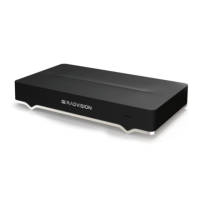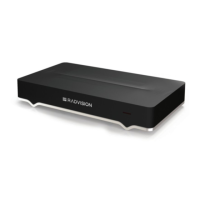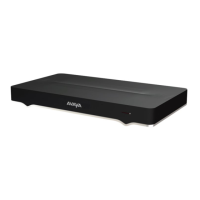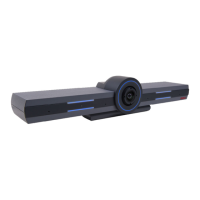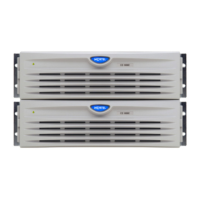Field Name Description
Mode If you set the Type field to Line, the microphone has a separate
dedicated cable supplying electrical power (no phantom power).
Select one of the following (for analog audio input only):
• Stereo: The L/R stereo input cable is unbalanced (not specially
built to reduce interference even when the cable is long).
• Mono: The mono input cable is balanced (it reduces interference
when the cable is long).
Ignore Mute (For analog and digital audio only) Select Yes to enable and
transmit presentation audio connected to the port when the
main microphone is muted.
4. From the web interface only, select Save.
5. (Optional) If remote endpoints hear DVI audio when in use, verify the DVI video input is
enabled.
a. Access the DVI settings. From the XT Series web interface, select Administrator
Settings > I/O Connections > Cameras > DVI. From the endpoint's main menu, select
Configure > Advanced > I/O Connections > Cameras > DVI.
b. Verify that Enabled is set to Yes.
Related links
Initial Configuration of the XT Series on page 93
Registering the XT Series to a SIP Server
About this task
This section explains how to register your XT Series to the SIP server.
The XT Series can function in a SIP environment, where names and numbers are managed by SIP
servers, not gatekeepers. You can dial an endpoint by entering its name or number like 1234 or
joe_smith, rather than remembering its IP address, where the SIP server routes the call correctly. To
do this, the SIP server must register all endpoints to maintain the mapping list of names/numbers
and endpoints to successfully route calls.
If your organization has a redundant SIP deployment, you can register the XT Series to as many as
three SIP servers, as described below. If your default SIP server fails, the XT Series automatically
uses the alternate SIP server.
Since older models of Cisco or BroadSoft do not support dual layouts (BFCP), you can only send
videoconference layouts alongside a computer presentation if your videoconferencing deployment
supports optimized presentation layouts, which use one stream for both video and presentation.
This is enabled by default on XT Series endpoints, as described in Configuring Presentation Layouts
for Single-Screen Endpoints). If you disabled this feature, you can either send shared content or the
video, but not both. For older BroadSoft models, controlling remote cameras is also not supported
(H.224 is disabled).
Initial Configuration of the XT Series
January 2017 Avaya Scopia
®
XT Series Deployment Guide 124
Comments on this document? infodev@avaya.com

